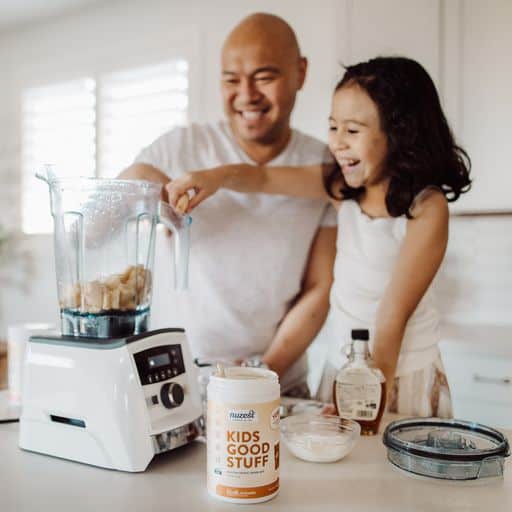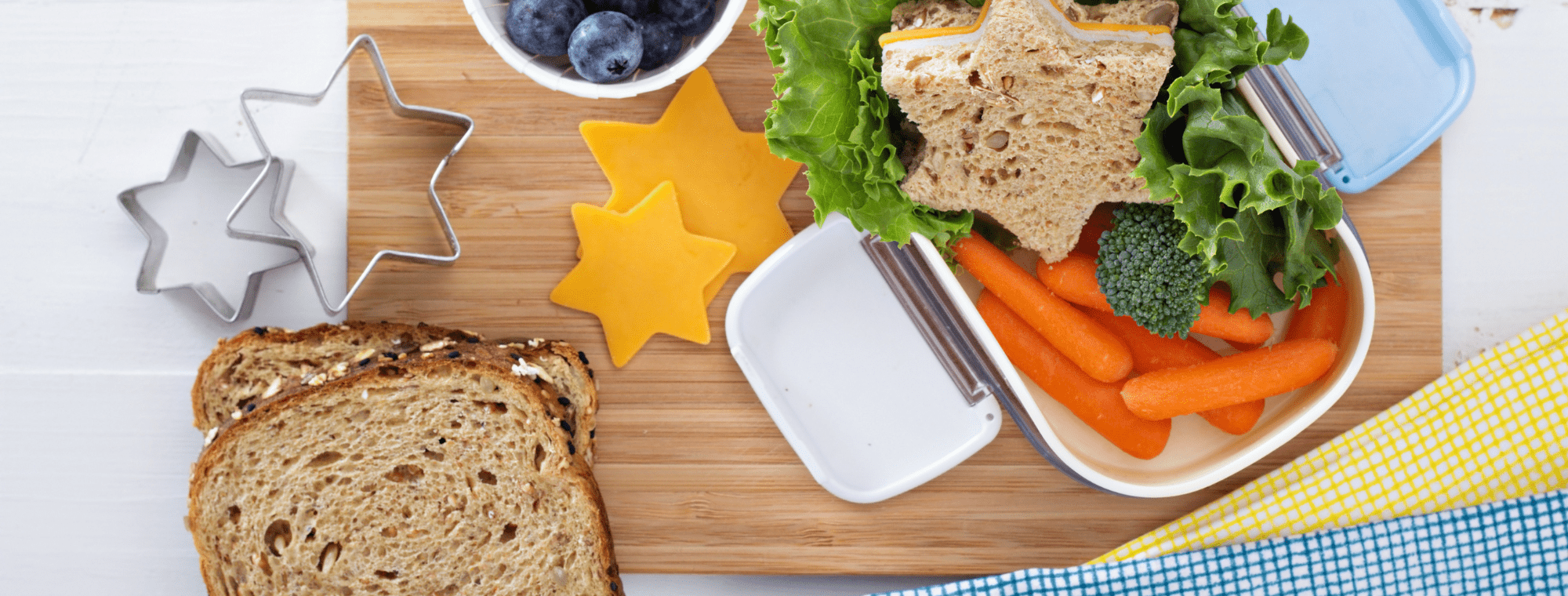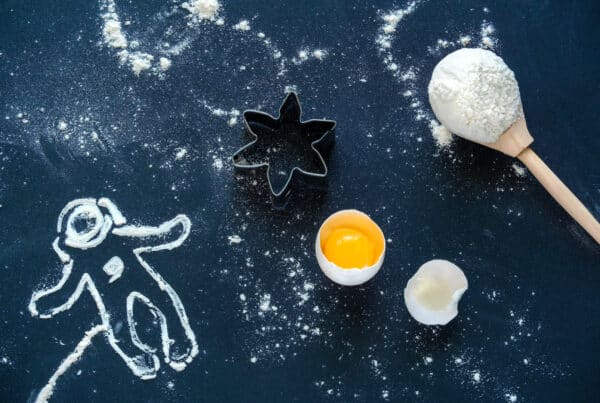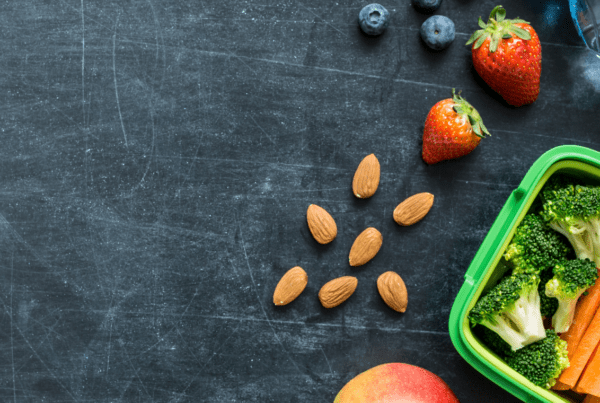Did you know that around 30% of a child’s daily food intake is consumed at school? What your child eats during their school day is critical to their learning and development. Creating a healthy lunchbox may seem daunting however when children eat well, they have more energy and better focus.[1] Nuzest Nutritionist Lauren Parchi shares her top tips on how to create a healthy and tasty lunchbox for your kids.
1. Build your lunchbox around the three macronutrients
Carbohydrates are the body’s main source of energy, however, not all carbohydrates are created equal. Wholegrain carbohydrates (complex carbs) are high in fibre compared to refined (simple) carbohydrates and promote a steady release of energy (AKA, no sugar rush). Lauren says, “Aim to include one serving of a complex carbohydrate in their lunchbox. Multigrain bread, wholegrain wrap, pasta, seed crackers and brown rice are all good options. Also, there are many high-fibre bread options on the market that look and taste like white bread for the more fussy eater.”
Protein is one of the most important macronutrients in a child’s lunchbox as not only does it promote growth and development, but it also keeps them feeling fuller for longer.[2] Some good sources of protein include chicken, turkey, tuna, eggs (if permitted by your school), dairy yoghurt, chickpeas, and tofu. These foods also provide other valuable nutrients such as zinc, iron and B vitamins which are necessary to support optimal health and well-being.
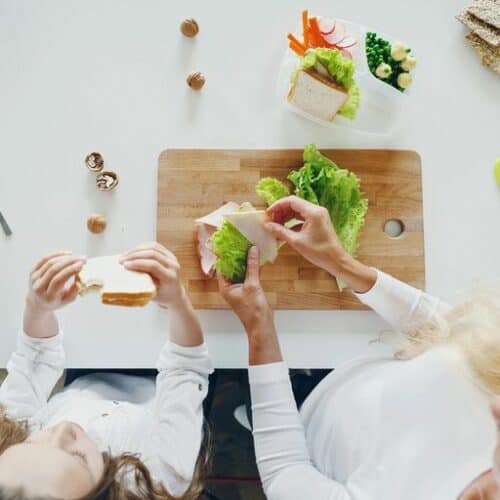
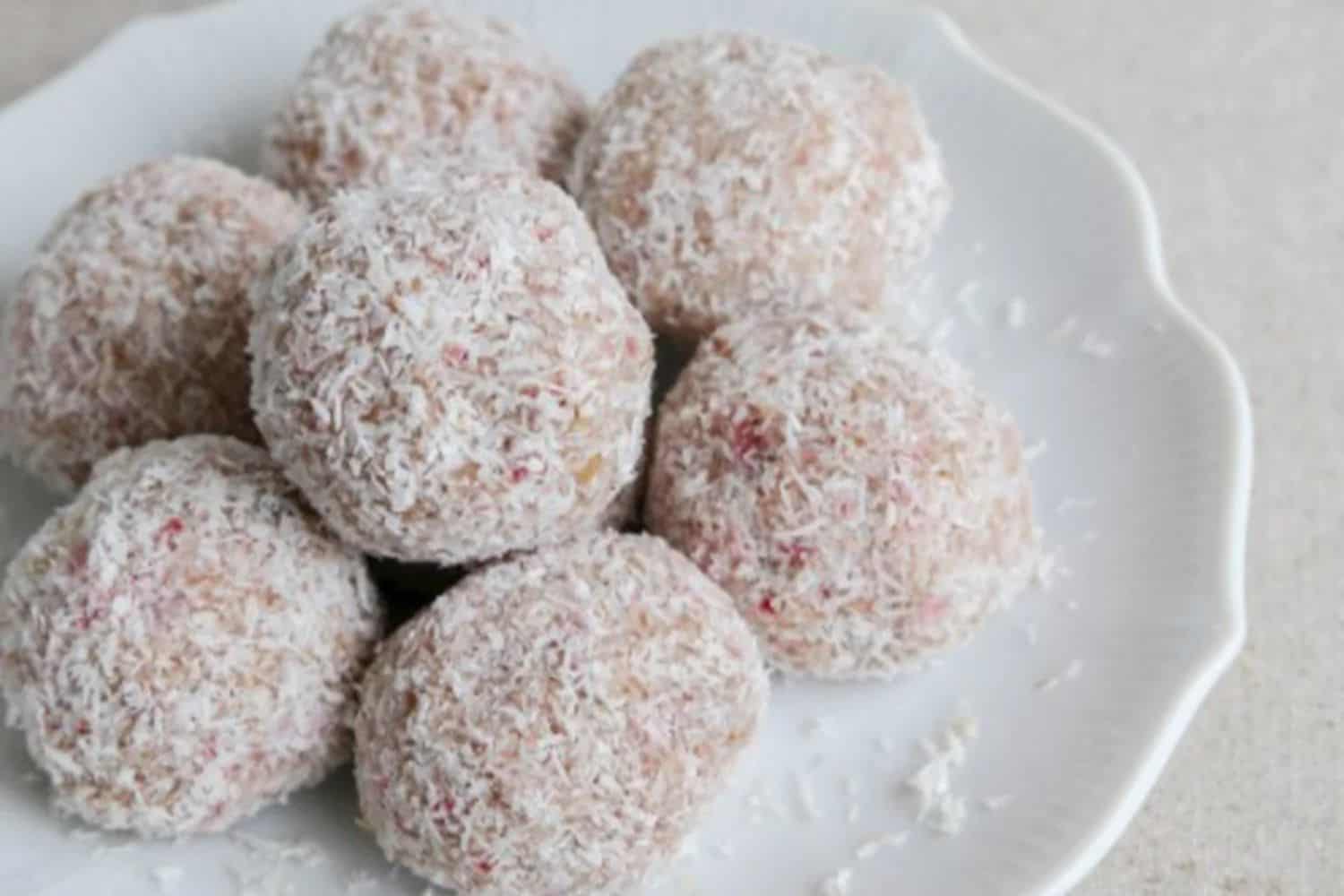
Aim to include two servings of protein in their lunchbox. You can achieve this by adding a source of protein to a sandwich or wrap and include a protein-rich snack. Lauren’s favourite school-friendly high-protein snack is Nuzest’s Strawberry Bliss Balls which are also nut free.
Healthy fats provide a good source of energy as well as essential vitamins and minerals, such as calcium, which is important for building healthy bones. 3Aim to include one serve of dairy or non-dairy product. Cheese sticks and yoghurt pots are a great option and if your child is lactose intolerant, unsweetened calcium-fortified non-dairy alternatives such as soymilk and coconut yoghurt are good substitutes.
2. Fruits and vegetables
Fruits and vegetables are a crucial part of your child’s lunchbox as they provide fibre, essential vitamins and minerals, such as vitamin C, zinc and magnesium, which help to promote immunity and vitality. They also provide a source of texture and crunch which is an important sensory stimulant for children. Always aim to include fresh or frozen fruit. Lauren recommends pre-cutting fruits and vegetables so it’s easier to pick up and consume. You can try using cookie cutters to create fun shapes or purchase snack-sized vegetables such as cherry tomatoes, snow peas, baby carrot sticks or mini cucumbers.
3. Prepare ahead of time
Meal preparation and planning is a key tool that can be used to keep you organised throughout the school week. Using leftovers from dinner can be a great way to speed up the lunchbox prep, and getting the kids involved creates some quality time to connect. Simply asking your child what fruit or snacks they would like in their lunchbox can help to ensure they come home with empty lunchboxes.
Some other great meal prep hacks include allocating one hour on the weekend to write out lunchbox ideas for the week ahead and batch cooking. Batch cooking is an efficient method that can be used to prepare many meals at once. Pick some of your child’s favourite recipes and double the quantities to increase the number of serves.
Filling Nutritional Gaps for Optimal Health
If you still feel that your child’s lunchbox is lacking in nutrition or find you are a constant victim of the ‘uneaten lunchbox’, supplementing with a plant-based powdered multivitamin is a great option to ensure your child is getting the nutrients they may otherwise be missing.
Lauren suggests adding one daily serving of Nuzest’s Kids Good Stuff to their diet. Kids Good Stuff is made from a base of 11 real fruits and vegetables, contributing to their daily fruit and veg requirements. It also provides 20+ vitamins and minerals, including 206mg of calcium, and 8g of plant-based protein per serv. If time in the morning is limited, Lauren recommends making a breakfast smoothie with frozen berries or banana with a serving of Kids Good Stuff, as a quick and easy way to get key nutrients to support their focus, digestion, growth and immunity.
Whilst every child’s lunchbox may look slightly different, it is important not to get caught up in perfection. Listening to your child’s needs and adjusting the contents to suit, teaches them to be aware of their hunger cues, taste preferences and cravings.
Nuzest Kids Good Stuff is available online and in select health food stores nationally. For more information and recipes visit www.nuzest.com.au
